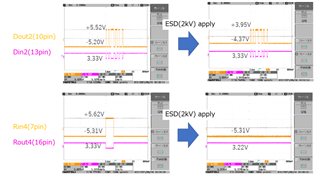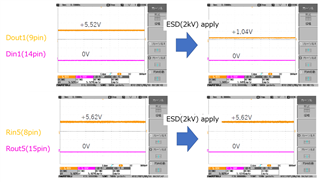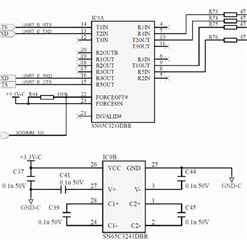Other Parts Discussed in Thread: STRIKE
Hi team,
When my customer did an ESD test while it was running on their system, it malfunctioned.
ESD applied from the case, so the intrusion route is unknown.
I'd like to know where to take measures.
So, could you tell me which circuit is malfunctioning with the following waveform?

Sincerely.
Kengo.





